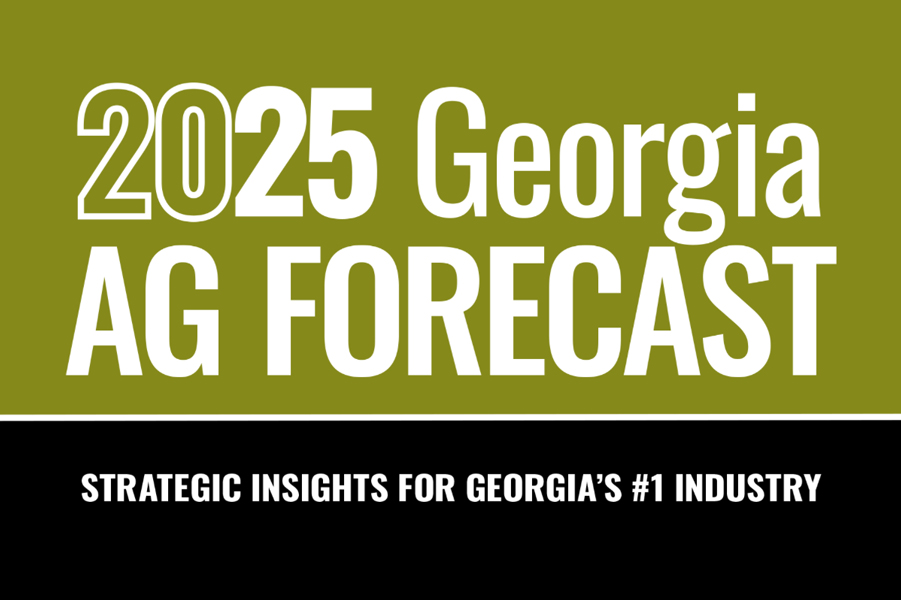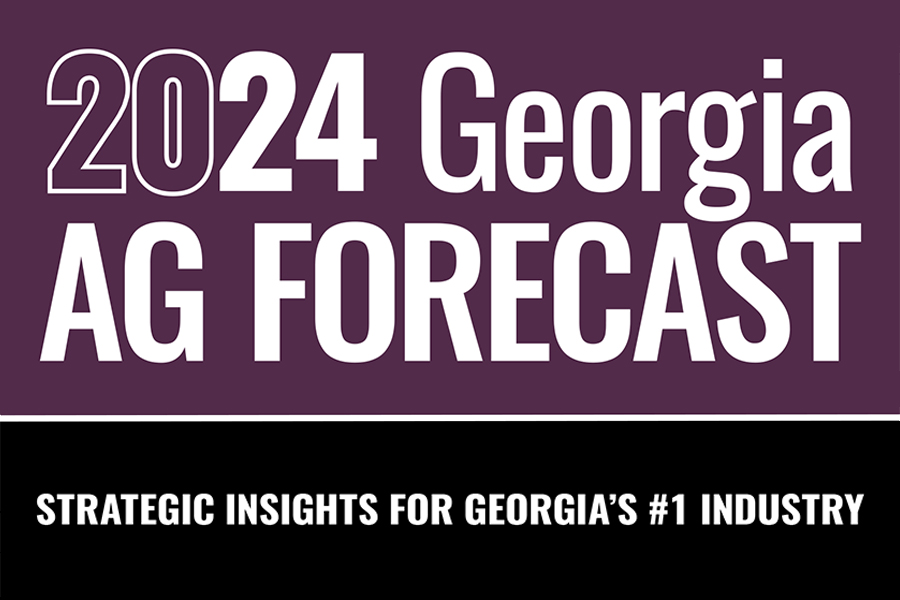Wheat
-

Commercial insect and weed control in small grains: wheat, triticale, barley, oats, and rye. Updated annually.
G. David Buntin, Stanley Culpepper, Alfredo Martinez, and Allison Faye Johnson
|
-

AP 130-3-09
2025 Corn, Soybean, and Wheat Outlook
1. Tight margins are expected to continue in 2025 for corn, soybeans, and wheat with commodity prices likely near or below the breakeven cost of production.
2. Bountiful grain and oilseed production, combined with a strong U.S. dollar and uncertain trade policy, leads to expectations for lower prices in 2025.
3. Expect more acres planted to corn, fewer acres planted to soybeans, and wheat plantings comparable to last year.Amanda R Smith
|
-

AP 130-2-06
2024 Corn, Soybean, and Wheat Outlook
1. Tighter margins are expected in 2024 for corn, soybeans, and wheat as commodity prices are forecast to be lower and input prices are expected to be flat.
2. Growing demand for sustainable biodiesel fuels will slow soybean price declines relative to the decline in corn prices.
3. Expect more acres planted to soybeans and fewer acres planted to corn and wheat.Amanda R Smith and Ben Campbell
|
-

AP 130-1-06
2023 Corn, Soybean, and Wheat Outlook
1. The Russia-Ukraine war and Mexico’s plan to ban genetically modified corn from the United States will increase uncertainty regarding corn prices. 2. The United States and the world will continue to have a tight wheat supply in 2023, supporting higher than average wheat prices. 3. The low ending stocks of U.S. soybeans indicate the need for more soybeans. Ending stocks might improve in 2023, leading to softer soybean prices.
Amanda R Smith and Yangxuan Liu
|
-

Sprouted grains are usually considered unsuitable for milling or distilling; however, they can serve as an excellent source of nutrients for cattle.
Wheat, which is commonly used for human consumption, is usually priced higher than other feedstuffs and is typically not utilized for livestock consumption. Sprouted wheat, however, is discounted heavily at the mill and may be economically feasible to incorporate into beef cattle rations.Lawton Stewart
|
-

Powdery mildew, caused by Blumeria graminis f. sp. tritici (syn. Erysiphe graminis) is an obligate, host specific fungus that attacks wheat exclusively. The pathogen reduces photosynthesis and increases respiration and transpiration rates in host leaves. Colonized plants lose vigor, impairing heading and grain filling. Heavily colonized leaves can be killed prematurely. This circular provides information on symptoms and control of powdery mildew for wheat growers in Georgia.
James W. Buck, Jeremy Kichler, Alfredo Martinez, and John D. Youmans
|
-

Stripe rust is an emerging disease in the state of Georgia. Evidence of increased aggressiveness of the disease has been reported recently. Rusts are the most economically important group of wheat diseases. More than $5 billion is lost to cereal rusts worldwide each year.
James W. Buck, Alfredo Martinez, and John D. Youmans
|
-

Wheat leaf rust, caused by the fungus Puccinia triticina (formerly known as Puccinia recondita f. sp. tritici), is often a destructive foliar disease of wheat in the state of Georgia. Rust fungi in wheat are highly specialized pathogens with narrow host ranges. This circular provides information on symptoms and control of leaf rust for wheat growers in Georgia.
James W. Buck, Jeremy Kichler, Alfredo Martinez, and John D. Youmans
|
-

Fusarium Head Blight (FHB), also called scab, is a devastating disease that is emerging in Georgia wheat fields. This publication contains important information on the biology of the causal agent, and conditions that favor the disease, detailed descriptions of the diseases symptoms, and the latest information on cultural, genetic, and chemical methods of control. The intended audience is producers, professionals, consultants, county faculty and the general public.
W. (Rome) Jerome Ethredge, James W. Buck, Alfredo Martinez, Brian Vermeer, and John D. Youmans
|